- Register
- Log in to Tune-In
- Wishlist (0)
-
Shopping cart
(0)
You have no items in your shopping cart.
Beatles News
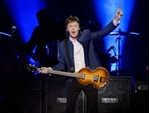
We recently covered how Paul McCartney is one of the most giving and charitable individuals in all of rock music, if not all of the music industry entirely when McCartney left this massive tip at a restaurant. In a touching yet unrelated follow-up to that story, we can once again shine another glaring example on why there is no other individual in this world like Sir Paul himself.
The iconic co-founder of the Beatles recently took to Twitter to proclaim his involvement in ‘The World’s Big Sleep Out’. According to the official website of the campaign: “The World’s Big Sleep Out Campaign was founded by Josh Littlejohn MBE, the co-founder of the charity Social Bite – based in Scotland.” It is run in partnership with multiple organizations such as UNICEF USA, The Institute for Global Homelessness, Malala Fund and others. The goal of this endeavor is to help raise awareness for homelessness and displacement. McCartney had this to say via Twitter about the campaign. Paul McCartney ‘angers’ Michael Jackson in studio photo.
Source: Mike Mazzarone/alternativenation.net
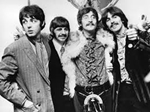
A new event will give Beatles fans a chance to hear the legendary album Sgt Pepper’s Lonely Hearts Club Band in a new immersive fashion. It will take place at National Museums Liverpool’s Dr Martin Luther King Jr Building at the Royal Albert Dock from 19 December 2019 to 9 January 2020 – not including 24-26 December and 31 December to 1 January.
Grammy-award-winning producer Giles Martin, son of Beatles producer George Martin, spoke to the Liverpool Echo about the location’s significance, saying that “without Liverpool there would be no Sgt Pepper. Liverpool is where it should be.” He also discussed the unique audio experience on offer, saying “people will become fully immersed in a soundscape, which is unlike any other. For me, it’s like imagining falling through the vinyl of a record and into this world where you’re surrounded by The Beatles. It’s like sitting in Abbey Road’s Studio 2 and having The Beatles play for you.”
Source: Evigan Xiao/guitar.com

John Lennon was not just a global music phenomenon, but an outspoken advocate for the anti-war, Native American, African American and feminist movements. Here are some of his most memorable quotes from his lifetime of activism and entertainment, according to goalcast.com.
“If everyone demanded peace instead of another television set, then there’d be peace.”
“Time you enjoy wasting, was not wasted.”
“When I was 5 years old, my mother always told me that happiness was the key to life. When I went to school, they asked me what I wanted to be when I grew up. I wrote down ‘happy’. They told me I didn’t understand the assignment, and I told them they didn’t understand life.”
Source: Katie Walker/deseret.com
details
Billboard Magazine recently released its list of the Greatest 125 Artists of All Time, with The Beatles taking the top spot.
Rounding out the top five are The Rolling Stones at two, Elton John at three, Mariah Carey at four, and Madonna at five.
Music journalist Eric Alper said the point of this list is really quite simple: to spark debate and controversy.
“It’s fun for people like you and I to sit here and complain or gloat or be gleeful that our favourite artists are making another chart.”
Tweet This
Let’s look at the band Chicago, best known for a string of hits like Hard To Say I’m Sorry, 25 Or 6 To 4 and Look Away. They took the number 10 slot, ahead of Elvis Presley.
“I remember them as kind of the AM radio staple in the 1980s and then they disappeared,” said Alper during his recent appearance on the 630 CHED Afternoon News. “But for 19-consecutive studio albums, they sold over a million copies in America.”
Another interesting case on this list is Taylor Swift.
Source: David Boles Global News/globalnews.ca
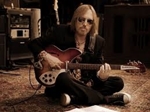
History is dotted with ‘where were you' moments, singular events that change the course of society in an instant. One such occasion was the the murder of John Lennon on Dec. 8, 1980. On that day, fellow rock icon Tom Petty had been in the studio working on his Hard Promises LP, while also hoping he’d get a chance to meet the famous former Beatle.
“I was working with Jimmy Iovine, who was a friend of John’s,” the rocker recalled in the book Conversations with Tom Petty. “And Ringo was working next door that week. The talk right around that time was that John was coming to sing on Ringo’s album. So we were kind of jazzed up, thinking we were going to meet John.”
Sadly, fate had other plans. Lennon was gunned down that night outside of his home at the Dakota in New York, the victim of a deranged fan. Petty was still in the studio when he got the news.
“A call came and said John had been shot," Petty recalled. "We just thought it was nonsense. And then a call came right back in about 15 minutes that said that John’s dead."
Source: ultimateclassicrock.com

As December rolls around each year, it brings with it a sense of melancholy and remembrance of things lost, in particular John Lennon, who was executed in front of his New York home 39 years ago. At the time, there was little solace to be gained in the aftermath of that news and it remains so today, though the undeniable escape from the pain both then and now — ironically enough — was the music that John created as part of The Beatles with Paul McCartney, George Harrison and Ringo Starr.
And rather than get mired in the sadness, one would rather go in the opposite direction and celebrate John’s memory, in this case by looking back at the day he met Paul and, despite the fact they could never have suspected it, was put on the road to quite literally change the world. That being said, the Earth didn’t shake, the clouds didn’t part and a choir or angels didn’t sing on July 6, 1957.
Source: closerweekly.com
details
On December 8th marked 39 years when one of the greatest minds to ever play rock ‘n’ roll was murdered. John Lennon meant so much to so many people it’s impossible to measure the loss. But if there’s a silver lining about the date, it’s also the late great Gregg Allman’s birthday. To remember these two monumental rock legends, check out The Allman Brothers Band doing the primarily Lennon-penned Beatles song “Rain” from the Jones Beach Theater on September 7, 2013 for this edition of Sunday Cinema.
Allman’s history with the song stretches back to 1985 when he recorded a version of “Rain” with a choir that came out as part of The Allman Brothers Band’s 1989 Dreams boxset. Allman would perform the song live in 2005 as part of his solo act. He would subsequently bring the tune to The Allman Brothers Band in 2013.
“Rain” was a good choice for Gregg to cover as it came at a particularly heady time for The Beatles and the young Allman. “Rain” arrived in May of 1966 along with the primarily McCartney-written tune “Paperback Writer.” Both songs came out of the groundbreaking Revolver sessions although neither appea details
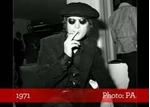
Yoko Ono has posted an emotional tribute to John Lennon on the 39th anniversary of his death.
The former Beatle was shot and killed outside his New York apartment on December 8, 1980. He was 40 years old.
Remembering her late husband, Ono called again for America to change its gun laws before describing the loss of John as a “hollowing experience.”
Ono wrote: “Dear Friends. Every day, 100 Americans are shot and killed with guns. We are turning this beautiful country into a War Zone. Together, let’s bring back America, the green land of peace.”
Ono shared a statistic that revealed over 1,400,000 people have been killed by guns in America since Lennon’s death.
Ono added: “The death of a loved one is a hollowing experience. After 39 years, Sean, Julian and I still miss him. Imagine all the people living life in peace.”
Source: Elizabeth Aubrey/nme.com
details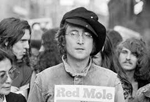
Unbelievably,Today will mark 39 years since former Beatle John Lennon was gunned down in front of his home at The Dakota in New York City. Lennon loved Manhattan and felt free there, free enough to not carry security detail or to put any kind of buffer between himself and the public.
Lennon was killed late in the day, so late that many didn’t learn of his death until the next morning. For weeks afterward, radio stations endlessly played his music.
Also after his death came quite a few songs written in tribute to Lennon.
Here are three of the best tribute songs. These are ‘the best’ because each of the composers/performers knew Lennon well and it shows in each song.
Source:cheatsheet.com
details

It was 39 years ago today that world-famous The Beatles star John Lennon was shot to death by a fan as he returned home in New York with his wife.
The music and pop culture icon, Lennon is being commemorated Sunday for his music, wordplay and visual arts.
Lennon was the founding member of The Beatles, formed with Paul McCartney, George Harrison and Ringo Starr (Richard Starkey) in Liverpool, England in 1960.
He was born in England on Oct. 9, 1940 during a German air raid in World War II. A child of divorce, Lennon grew up with his aunt, Mimi.
His mother Julia Lennon was the first person to introduce him to music when she taught him how to play the banjo and piano.
Lennon lost his mother in a car accident in July 1958. His father, Alfred Lennon, a merchant seaman, never had close relations with his son.
Source: aa.com.tr
details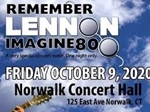
On October 9 of next year, John Lennon would have turned 80 years of age. On the exact date of this momentous occasion, Friday evening, October 9, 2020, Beatles fans and music aficionados from all over will "come together" at the Norwalk Concert Hall, 125 East Avenue in Norwalk, Connecticut, for a very special theatrical concert event entitled "Remember Lennon: Imagine 80." Doors open at 7pm and showtime is 8pm.Connecticut-based Liverpool Productions Beatles Fan Club premiered a similar event in 2010 at the Shubert Theater in New Haven in celebration of John Lennon's 70th birthday. The show was a speculative representation of a concert that Lennon may have performed had he still been alive and actually playing out. The show incorporated multi-media slide-shows and rare video, a full backing band and state-of-the art production to present an evening of John Lennon's Beatles and post-Beatles material live in concert. It included not only Lennon's earlier "Moptop" hits with his mates Paul McCartney, George Harrison, and Ringo Starr, but also covered John's most memorable and poignant recordings as a solo artist.
Source: patch.com

On Dec. 8, 1980, John Lennon was shot to death outside his New York City apartment building by a deranged fan.
The former member of The Beatles was gunned down by Mark David Chapman in the archway of the Dakota, where Lennon lived with his wife, Yoko Ono, and his son, Sean.
The shocking act of violence was felt around the world. There was an outpouring of grief as fans held solemn vigils.
The news was broken to America by Howard Cosell on ABC's "Monday Night Football," and the above video shows you how Channel 7's Rose Ann Scamardella delivered the news after the game's end, and how WABC-TV covered the story in the days of mourning that lay ahead.
Fans quickly gathered outside the Dakota apartments to mourn the loss of the iconic musician, and stayed for days.
His grieving fans spoke out against the senseless act of violence that overwhelmed not only New York City -- but also the world.
Source: abc7ny.com
details
When asked if he felt nostalgia for the old days Keith Moon and John Entwistle were with him in The Who, Townshend had a whopper of a reply. “It’s not going to make Who fans very happy, but thank God they’re gone,” he said. (Townshend later apologized to those he may have hurt.)
But no one could chalk that up to Townshend’s age and perceived crankiness. He’s been candid — at times, brutally so — from the start. In The Kids Are Alright (1979), you’ll find a much younger Townshend describing his own act as “musical sensationalism.”
In that documentary, you get a peek at another 1966 clip when Townshend spoke about a lack of quality in The Who’s music. And he said there wasn’t much in the quality in pop music as a whole — Beatles included.
Source: cheatsheet.com
details
If you wanted to recount the breakup of The Beatles, you could start with the band’s final single, “The Long and Winding Road.” When the Fab Four began work on this track in January 1969, they were hardly on good terms. (Anyone who’s caught the Let It Be documentary can see that.)
By the time “The Long and Winding Road” was about to be released (spring 1970), Paul McCartney was appalled at what the song had become. Once Phil Spector came in to salvage the Let It Be tapes, Paul’s original concept changed so much it was nearly unrecognizable.
Spector’s work, which included overdubs of an orchestra and choir, made a mockery of the album’s “back to basics” concept. But Spector had his reasons for using a heavy hand in his role as producer.
Source: cheatsheet.com
details
On New Year's Day in 1962, a then-unknown band called The Beatles performed 15 songs for British label Decca Records. The band believed the audition would land them a recording contract.
It did not.
There is some debate as to whether Decca Records rejected The Beatles or The Beatles rejected an offer from Decca to press their records only if the band paid for it themselves. Whatever the case, The Beatles' then manager Brian Epstein held on to a recording of the audition.
The Beatles, of course, went on to get signed (their first big hit in America was with EMI Records in 1963) and became one of the most beloved and famous bands in history.
Now, Sotheby's London will auction the tape of the Decca audition online, estimating it will sell for 50,000 to 70,000 pounds, or about $65,000 to $90,000.
Source: Taylor Locke/cnbc.com
details